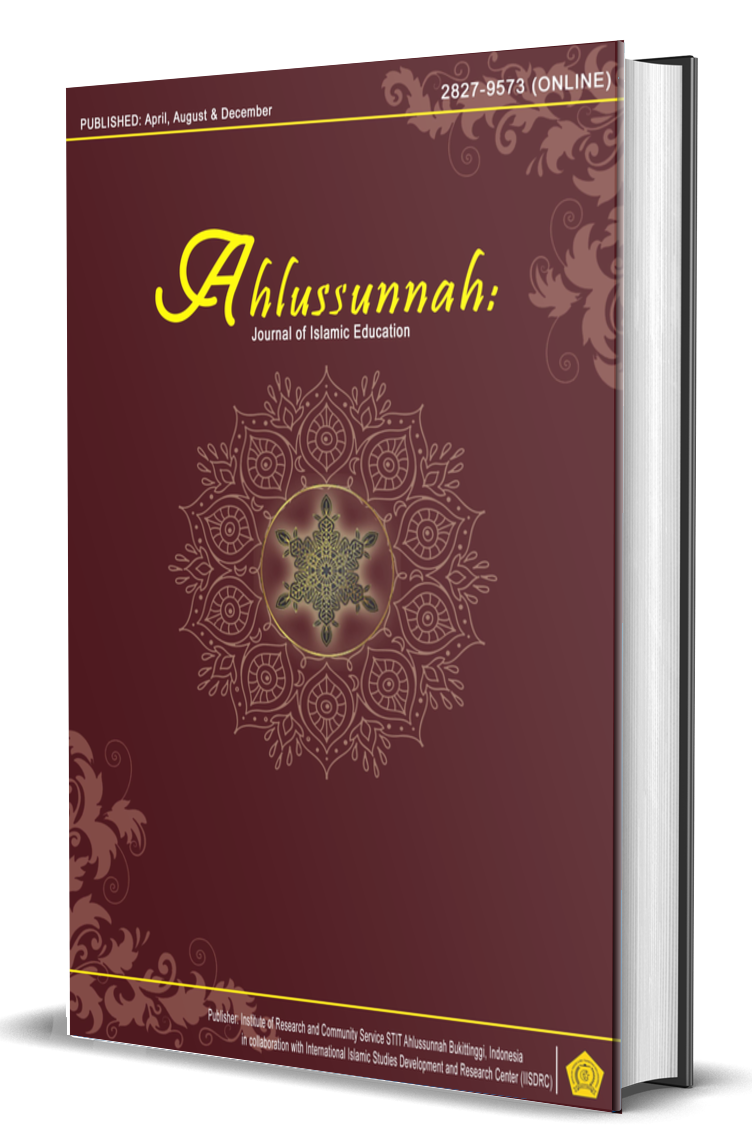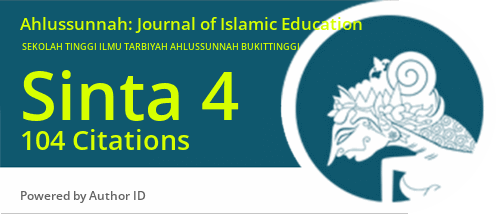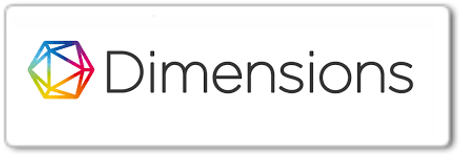Identification and Analysis of the Design Process of Character Education for Students in Islamic Boarding Schools in West Sumatra
DOI:
https://doi.org/10.58485/jie.v2i1.186Keywords:
Identification, design process, character educationAbstract
At the Miftahul Ulumi Syar’iyah Canduang Islamic boarding school, the vision and mission are seamlessly woven into the educational fabric, embracing diverse dimensions of character development outlined by religious and governmental directives. Through a collective effort, school administrators and teachers utilize these foundational principles to foster students' character growth, extending into extracurricular activities both within and outside the school premises. Researchers seek to investigate and evaluate the character education model implemented at the Miftahul Ulumi Syar’iyah Canduang Islamic boarding school, employing a descriptive methodology that encompasses field research techniques. Teachers oversee student activities throughout lessons and extracurriculars, ensuring active participation and guidance. The educational approach divides into intracurricular and extracurricular realms, with teachers directing classroom engagement and extracurricular pursuits occurring outside regular hours. Teacher evaluations, conducted weekly or monthly, monitor progress. The head of curriculum notes improved discipline and manners among students, reflecting positive character education outcomes.
Downloads
References
Alabdulkarem, A., Alhojailan, M., & Alabdulkarim, S. (2021). Comprehensive investigation of factors influencing university students’ academic performance in saudi arabia. Education Sciences, 11(8). https://doi.org/10.3390/educsci11080375
Asril, Z. (2021). Forming Student Social Intelligence Through Islamic Religion Lectures at Public Universities. Khalifa: Journal of Islamic Education, 5(1), 34. https://doi.org/10.24036/kjie.v5i1.114
Azmi, S., & Wardi, F. (2020). Muhammad Zainuddin Abdul Madjid: The Pioneer of Islamic Education in Lombok Community West Nusa Tenggara, Indonesia. Khalifa: Journal of Islamic Education, 4(1), 19. https://doi.org/10.24036/kjie.v4i1.37
Bolland, E. J. (2017). People, Mission, Vision and Planning in Strategic Management. Comprehensive Strategic Management, 57–85. https://doi.org/10.1108/978-1-78714-225-120171003
Dixon, F. A., Yssel, N., McConnell, J. M., & Hardin, T. (2014). Differentiated instruction, professional development, and teacher efficacy. Journal for the Education of the Gifted, 37(2), 111–127. https://doi.org/10.1177/0162353214529042
Edmunds, R., Thorpe, M., & Conole, G. (2012). Student attitudes towards and use of ICT in course study, work and social activity: A technology acceptance model approach. British Journal of Educational Technology, 43(1), 71–84. https://doi.org/10.1111/j.1467-8535.2010.01142.x
Efendi, E., Alkhaira, S., Mutiaramses, M., Elkhaira, I., & Monlinia, Y. (2019). Developing Islamic Learning Media of Fable Box to Develop Students’ Spiritual Quotient. Khalifa: Journal of Islamic Education, 3(1), 73. https://doi.org/10.24036/kjie.v3i1.28
Gehman, J., Treviño, L. K., & Garud, R. (2013). Values work: A process study of the emergence and performance of organizational values practices. Academy of Management Journal, 56(1), 84–112. https://doi.org/10.5465/amj.2010.0628
Giza, C. C., Kutcher, J. S., Ashwal, S., Barth, J., Getchius, T. S. D., Gioia, G. A., Gronseth, G. S., Guskiewicz, K., Mandel, S., Manley, G., McKeag, D. B., Thurman, D. J., & Zafonte, R. (2013). Summary of evidence-based guideline update: Evaluation and management of concussion in sports. Neurology, 80(24), 2250–2257. https://doi.org/10.1212/WNL.0b013e31828d57dd
Hanson-RasMiftahul Ulumi Syar’iyahsen, N. J., & Lauver, K. J. (2018). Environmental responsibility: millennial values and cultural dimensions. Journal of Global Responsibility, 9(1), 6–20. https://doi.org/10.1108/JGR-06-2017-0039
Hennecke, M., Bleidorn, W., Denissen, J. J. A., & Wood, D. (2014). A Three-Part Framework for Self-Regulated Personality Development across Adulthood. European Journal of Personality, 28(3), 289–299. https://doi.org/10.1002/per.1945
Ismail, I. (2016). Character Education Based on Religious Values: an Islamic Perspective. Ta’dib: Jurnal Pendidikan Islam, 21(1), 41–58. https://doi.org/10.19109/td.v21i1.744
Jia, C., Cai, Y., Yu, Y. T., & Tse, T. H. (2016). 5W+1H pattern: A perspective of systematic mapping studies and a case study on cloud software testing. Journal of Systems and Software, 116, 206–219. https://doi.org/10.1016/j.jss.2015.01.058
Lunn Brownlee, J., Scholes, L., Walker, S., & Johansson, E. (2016). Critical values education in the early years: Alignment of teachers’ personal epistemologies and practices for active citizenship. Teaching and Teacher Education, 59, 261–273. https://doi.org/10.1016/j.tate.2016.06.009
Luque, A., Carrasco, A., Martín, A., & de las Heras, A. (2019). The impact of class imbalance in classification performance metrics based on the binary confusion matrix. Pattern Recognition, 91(3), 216–231. https://doi.org/10.1016/j.patcog.2019.02.023
Magnell, T. (2012). Critical Points for Civilization, Intelligence, and Value. Journal of Value Inquiry, 46(1), 1–12. https://doi.org/10.1007/s10790-012-9328-y
Mardiana, P. D., Ikhsan, M., & Analka, A. (2021). The Role of Islamic Education Teachers in the Middle of Society in Religious Activities. International Journal of Multidisciplinary Research of Higher Education, 4(1), 19–24. https://doi.org/10.24036/ijmurhica.v4i1.151
Mathiyazhagan, K., Govindan, K., NoorulHaq, A., & Geng, Y. (2013). An ISM approach for the barrier analysis in implementing green supply chain management. Journal of Cleaner Production, 47, 283–297. https://doi.org/10.1016/j.jclepro.2012.10.042
Nopriza, C., Yulianti, F., Adel, S., & Susanti, H. (2021). Eight Skills of Islamic Religious Education Teachers in Improving Student Learning Outcomes in Junior High School. International Journal of Multidisciplinary Research of Higher Education, 4(2), 52–58. https://doi.org/10.24036/ijmurhica.v4i2.155
Novita, Y., Yulianti, V., Handayani, D., & Sugestina, E. (2022). Teachers Efforts to Improve Student Literacy in Islamic Cultural History Subjects. Khalifa: Journal of Islamic Education, 6(1), 102. https://doi.org/10.24036/kjie.v6i1.34
Peviyatmi, P., Sumin, S. Bin, & Ibrahim, R. (2017). Concept of Moral and Character of Professional Doctor in Islam. Khalifa: Journal of Islamic Education, 1(1), 78. https://doi.org/10.24036/kjie.v1i1.7
Rasdiany, A. N., Putri, V. Y., Azizah, D. D., Asril, Z., & Albizar, A. (2022). Motivation of Parents to Choose Religious Educational Institutions as Means of Child Education. International Journal of Multidisciplinary Research of Higher Education, 5(1), 10–17. https://doi.org/10.24036/ijmurhica.v5i1.123
Rasyid, D., Rasyid, A. D., Lubis, A., Balwi, M. A. W. F. B. M., & Rasyid, B. D. (2021). The writing of hadith in the era of prophet muhammad A Critique on Harun Nasution’s Thought. Al-Jami’ah, 59(1), 191–220. https://doi.org/10.14421/ajis.2021.591.191-220
Sabrina, V., Oktavia, G., Albizar, A., Susanti, H., AR, F. M., & Suryani, Y. (2022). Eight Supporting Factors for Students Success in Quran Memorization. Khalifa: Journal of Islamic Education, 6(1), 73. https://doi.org/10.24036/kjie.v6i1.202
Sartika, F., Ritonga, M., & Rasyid, A. (2020). Implementation of Islamic Religious Education in Madrasah Ibtidaiyah During Covid-19 Pandemic. Khalifa: Journal of Islamic Education, 4(2), 97. https://doi.org/10.24036/kjie.v4i2.95
Shonkoff, J. P., Garner, A. S., Siegel, B. S., Dobbins, M. I., Earls, M. F., McGuinn, L., Pascoe, J., Wood, D. L., High, P. C., Donoghue, E., Fussell, J. J., Gleason, M. M., Jaudes, P. K., Jones, V. F., Rubin, D. M., Schulte, E. E., Macias, M. M., Bridgemohan, C., Fussell, J., … Wegner, L. M. (2012). The lifelong effects of early childhood adversity and toxic stress. Pediatrics, 129(1). https://doi.org/10.1542/peds.2011-2663
Taufik, M. (2020). Strategic Role of Islamic Religious Education in Strengthening Character Education in the Era of Industrial Revolution 4.0. Jurnal Ilmiah Islam Futura, 20(1), 86–104. https://doi.org/10.22373/jiif.v20i1.5797
Viner, R. M., Ozer, E. M., Denny, S., Marmot, M., Resnick, M., Fatusi, A., & Currie, C. (2012). Adolescence and the social determinants of health. The Lancet, 379(9826), 1641–1652. https://doi.org/10.1016/s0140-6736(12)60149-4
Wang, M. Te, & Sheikh-Khalil, S. (2014). Does Parental Involvement Matter for Student Achievement and Mental Health in High School? Child Development, 85(2), 610–625. https://doi.org/10.1111/cdev.12153
Wartoyo, F. X., & Prasetyo, T. (2021). Human Rights Enforcement in Indonesia During a Pandemic: A Critical Study of Dignified Education. Journal of Digital Law and Policy, 1(1), 1–8. https://doi.org/10.58982/jdlp.v1i1.61
Yeager, D. S., & Dweck, C. S. (2012). Mindsets That Promote Resilience: When Students Believe That Personal Characteristics Can Be Developed. Educational Psychologist, 47(4), 302–314. https://doi.org/10.1080/00461520.2012.722805
Downloads
Published
How to Cite
Issue
Section
License
Copyright (c) 2023 Wino Mulya Hari, Anita Indria, Muhammad Hafizh

This work is licensed under a Creative Commons Attribution-ShareAlike 4.0 International License.
Creative Commons Attribution 4.0 (CC BY)











